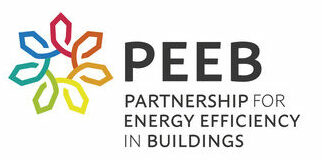The Partnership for Energy Efficiency in Buildings (PEEB) has released a first-of-its-kind White Paper showing how Article 6 of the Paris Agreement can finance decarbonisation in the buildings sector. Providing information on methodologies and high-impact projects across all building stages, the report serves as a comprehensive knowledge resource for policymakers, developers, and MRV specialists.
Q: Why is new climate finance so urgent?
Last year, countries agreed to mobilise at least USD 1.3 trillion annually by 2035 to support climate action in developing countries. Delivering on this goal requires new, effective ways to fund action at scale. One of the biggest challenges, and opportunities, lies in the buildings sector, which is responsible for 32% of global energy use and 34% of CO2 emissions, but remains among the hardest to decarbonise.
Q: What role can carbon markets play?
Carbon markets, now fully operational under Article 6, offer major potential to channel finance into the sector. But applying them to buildings is not straightforward. The sector is fragmented, projects are often small, and measuring impacts can be complex. New thinking is needed to make Article 6 work for buildings.
Q: What does PEEB’s new White Paper provide?
PEEB’s new White Paper shows how Article 6 can be applied to buildings. It acts as a compendium and reference for building policy experts, carbon market actors, and Monitoring, Reporting, and Verification (MRV) specialists, answering three central questions:
- What does Article 6 mean for the buildings sector?
- Which methodologies and MRV systems can help navigate complex carbon market rules?
- Which high-impact projects are most viable?
The analysis looks at all four stages of buildings – production, construction, use, and end-of-life – assessing projects against four questions: do they make financial sense, are easy to monitor, avoid double-counting, and scale effectively?
Q: Can Article 6 help finance sustainable buildings?
Yes – with the right project design. High upfront costs, additionality, MRV, and scale are all challenges, but they can be addressed. Performance-based models and programmatic bundling can improve economic viability. Additionality can be demonstrated by going beyond existing regulations or using certification schemes. MRV can balance credibility and practicality through a mix of real data and default values. Aggregation and digital tools can enable scale.
Q: Are there methodologies available?
Yes. Proven methodologies already exist from the Clean Development Mechanism (CDM) and voluntary carbon markets. For the production stage, methods cover cement, steel, aluminium, and concrete, focusing on energy efficiency, fuel switching, and cleaner production. For the use stage, methodologies exist for retrofits, lighting, appliances, boilers, and HVAC. Construction and end-of-life methods, however, are less developed. The methodological “toolbox” should be expanded to cover these gaps, ensuring all building stages can be credibly included under Article 6.
Q: Which projects show the greatest potential?
The most viable projects today are:
- Retrofits of commercial and public buildings
- New low-carbon buildings and materials
- Heat pump installations
- Building-integrated systems (boilers, HVAC)
These offer a strong mix of scalability, cost-effectiveness, and measurable results. Looking ahead, low-carbon materials such as timber, hempcrete, and advanced composites will gain importance as standards evolve. By contrast, small-scale equipment upgrades or recycling are often less practical due to high costs and MRV challenges. Local context also matters: urban projects with metered energy use are generally easier to implement than dispersed or informal activities.
Q: What makes this White Paper a key resource?
The White Paper provides a thorough review of methodologies for calculating GHG reductions across the buildings sector, going beyond headline insights. It also links these methodologies to project types and their potential viability. Peer-reviewed and validated at a technical session at the June Climate Conference (SB62), it stands as a comprehensive reference for policymakers, developers, and MRV specialists alike.
Q: What’s next?
To support implementation, PEEB will soon release a Handbook based on the White Paper. The Handbook will provide practical guidance and simplified tools for applying the methodologies from the White Paper to real-world projects.
To stay informed on PEEB’s work on Article 6:
- Join the conversation on LinkedIn
- Subscribe to our newsletter for the latest updates
- Contact us at info@peeb.build to get directly involved
